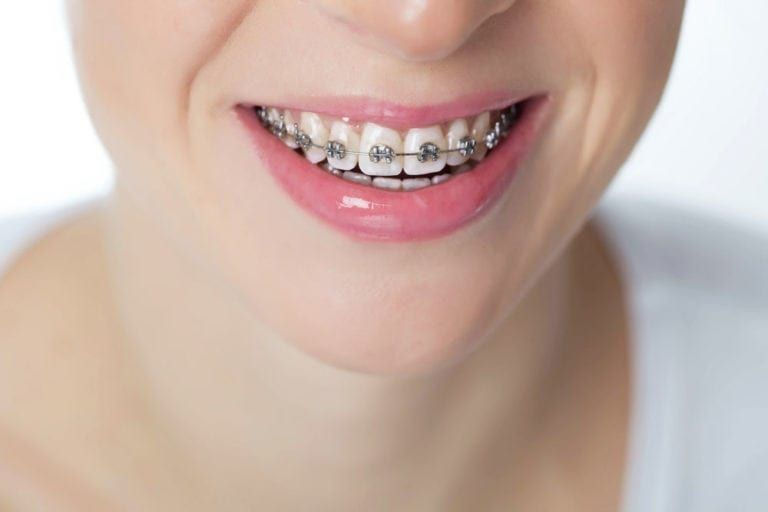The Science Behind Clear Aligners: How Do They Actually Work?
- dclinicdubai
- Jul 22
- 4 min read
Clear aligners have transformed orthodontic treatment into a more discreet, convenient experience for patients of all ages. Their popularity continues to grow worldwide, especially in modern dental hubs like Aligners Dubai, where the latest technology meets personalized care. But beyond their transparent appearance and ease of use, clear aligners are backed by complex biomechanics and materials science that make them both precise and effective. So, how do these seemingly simple trays move teeth? Let’s explore the fascinating science behind clear aligners.

The Biomechanics of Tooth Movement:
At the heart of aligner technology is the principle of controlled force. Teeth don’t move freely; they shift when constant, gentle pressure is applied to the periodontal ligament surrounding the root. This pressure triggers a biological response where bone is resorbed on one side of the tooth and rebuilt on the other. Clear aligners are engineered to apply just the right amount of force in the right direction over time, allowing for gradual, predictable tooth movement.
3D Imaging and Digital Mapping:
The process begins with a detailed scan of the patient’s mouth using advanced 3D imaging technology. This scan creates a precise digital model of the teeth, which is used to simulate tooth movement and design a custom treatment plan. In many clinics offering Aligners Dubai services, this digital mapping allows orthodontists to preview the entire journey—from initial alignment to the final smile—before the first aligner is even produced.
Material Science Behind the Trays:
Clear aligners are typically made from thermoplastic polymers that are both biocompatible and durable. These materials must strike a balance between flexibility and rigidity—strong enough to move teeth, yet comfortable enough for extended wear. Most aligner brands use multi-layered plastic formulations that maintain consistent force over time and resist deformation from chewing or thermal changes. This material innovation is key to the aligners’ success.
How Each Aligner Works:
Each tray in the aligner series is slightly different from the last, designed to move teeth incrementally toward their final positions. A single aligner may move a tooth up to 0.25 millimeters. The aligners are worn for 1–2 weeks at a time, with each new tray continuing the process of gradual adjustment. This sequential pressure approach ensures that movement is steady, safe, and efficient, minimizing discomfort and maximizing control.
Attachments and Enhancements:
In some cases, clear aligners alone are not enough to achieve complex tooth movements. Dentists may use small, tooth-colored attachments made of composite resin that act as anchor points for the trays. These attachments help aligners apply more specific forces where needed. Other enhancements include elastics or interproximal reduction (slight reshaping of enamel) to assist in bite correction or crowding issues, giving aligners more versatility in treatment planning.
Patient Compliance and Monitoring:
Unlike fixed braces, clear aligners rely heavily on patient cooperation. They must be worn for 20 to 22 hours a day to be effective. Compliance is monitored through scheduled dental check-ups and sometimes with digital apps that track aligner wear time. Providers in Aligners Dubai often use sophisticated progress-tracking tools to ensure patients stay on course, adjusting plans as needed based on real-time data and feedback.
Customization Through Artificial Intelligence:
Modern aligner systems often incorporate artificial intelligence to enhance treatment planning. AI algorithms analyze thousands of cases to predict the most efficient tooth movement paths, optimizing aligner shapes and schedules. This level of customization ensures high accuracy, especially in clinics using state-of-the-art AI platforms as part of their Aligners Dubai service offerings. AI helps reduce treatment time while improving the predictability of outcomes.
Long-Term Retention and Stability:
After the active treatment phase, patients typically need to wear retainers to prevent their teeth from shifting back. This retention phase is crucial because it takes time for the surrounding bone and soft tissue to adapt to the new tooth positions. Retainers may look similar to aligners but are specifically designed to hold the teeth in place rather than move them. Failing to wear retainers as directed can result in relapse, undoing months of progress.
Safety and Minimal Side Effects:
Clear aligners are generally safe, with minimal risk of complications when used as prescribed. Some users experience mild discomfort or speech issues during the adjustment period, but these are usually temporary. The absence of metal wires also reduces the risk of gum irritation and emergency visits. As a non-invasive orthodontic option, aligners provide a lower-risk pathway to dental correction for a wide range of cases.
Final Thoughts:
Clear aligners are more than just a cosmetic convenience—they are a culmination of years of research in orthodontics, biomechanics, and materials science. Their ability to transform smiles discreetly and comfortably is grounded in precise engineering and careful planning. Whether you're exploring treatment options or simply curious about how they work, understanding the science behind aligners adds a new level of appreciation for this modern dental innovation. If you're considering treatment and seeking top-tier care, providers in Aligners Dubai combine advanced technology with personalized orthodontic expertise, making it a great place to start your journey to a straighter smile.


Comments